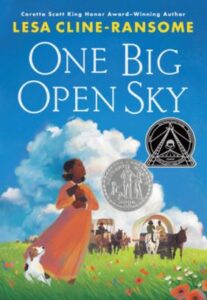Lily’s teenage sister, Sam, calls her a QAG: a stereotypical Quiet Asian Girl. And as much as Lily hates that her sister teases her with that acronym, she has to admit that the derogatory term kind of fits. You see, Lily’s always had that special ability to disappear, to be ignored or overlooked in a room full of people. She doesn’t make a fuss, she doesn’t draw people’s attention, she doesn’t even make friends all that easily. She stays quiet.
So, when Lily, Sam and their mother all pack up and move from California to their grandmother’s home in Sunbeam, Washington, Lily doesn’t say much. Sam complains openly. On the hour. But Lily takes things in stride. If nothing else, she’ll get to see her Halmoni, her Korean grandmother, and hear her stories once again. Halmoni weaves the most wonderful stories—some plucked from Korean folklore, others snatched out of imagination—that have always seemed magical and mysterious to Lily.
But when Lily and her family pull into Sunbeam—in a pouring torrential rain, no less—Lily sees a tiger. No, not just a tiger, this is a Tiger: a huge, obviously magical beast that no one else in the car can see. And the young girl starts to worry that either something is terribly wrong; or that perhaps the stress of leaving their home, after her father’s recent death, is making her just a little crazy.
When they all slosh wet and soggily into Halmoni’s house and get to see and hug the old beloved woman, though, Lily quickly realizes that something is terribly wrong. Her grandmother is obviously frail and sick. And it’s equally clear that they haven’t all arrived just for a visit.
Lily starts to piece things together after Halmoni tells her another broad and fanciful story. It’s a story about herself as a younger woman, and the power of stories … and of stories stolen. And when Lily is paid another visit by the now talking magical tiger, she realizes that her grandmother stole some forgotten stories long, long ago. The tiger suggests that they are the reason that her grandmother is falling ill. The mystical beast even offers Lily a bargain for her Halmoni’s life if she helps find those hidden-away precious things.
But can anyone truly trust a magical tiger? For that matter, should any sane person even believe in such outlandish deals? And what will happen if you do?
Lily doesn’t have any answers for any of that. But … she does believe.











